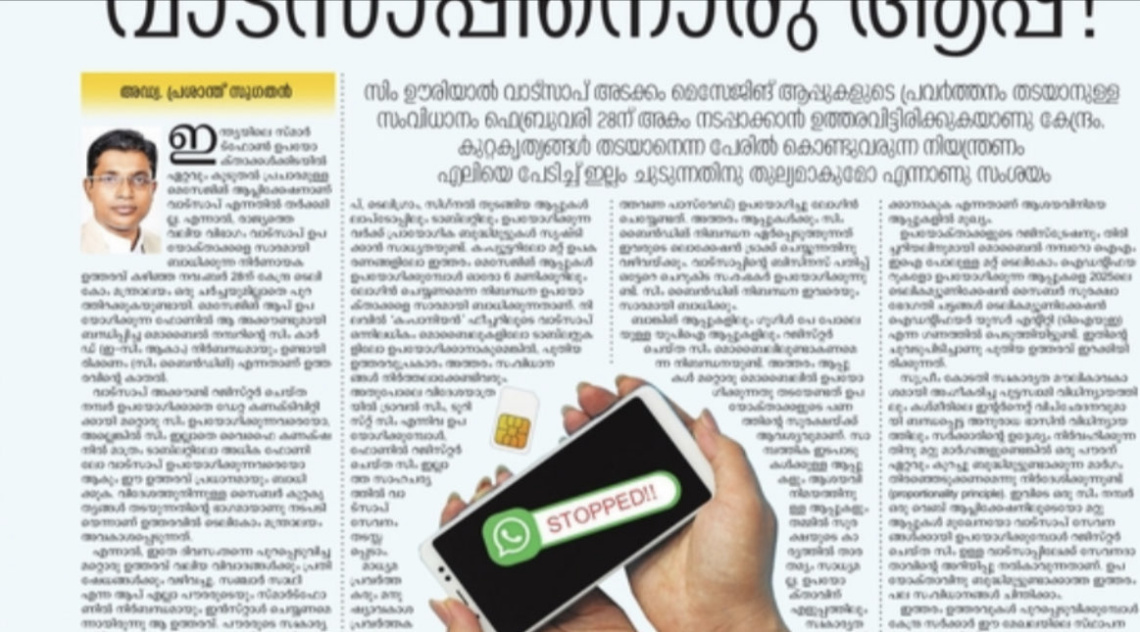On day 34 of the final Aadhaar hearing, Advocate Gopal Sankarnarayanan appearing for Centre for Civil Society submitted that the right to identity is an absolute fundamental right and it stems from recognition of an individual. He stated that Aadhaar provides one kind of proof of identification but an individual has more than one kind of identity, for e.g, father, brother, son, among others.
J. Chandrachud remarked that Section 7 of the Aadhaar Act seeks to identify the beneficiaries that require subsidies. That does not mean that it takes away other forms of identity. In reply, Mr. Sankarnarayanan stated that Aadhaar is a twelve digit number that helps identify people who need subsidies but there can be many that do not need that identity.
Mr. Sankarnarayanan admitted that he supports Aadhaar for the control, security and safeguards it provides but Section 139AA of the Income Tax Act takes away those. Reading out the statement of objects and reasons, he pointed out that “identification of targeted beneficiaries” is key. Aadhaar is voluntary and can be used as “proof of identity” for someone who does not need subsidies, he stated. In this regard, Mr. Sankarnarayanan argued that Section 5 of the Aadhaar Act enjoins UIDAI to take special measures for vulnerable groups which proves that there is an element of discharge of obligation by the State. He further contended that the Constitution lays down that any penny taken from the Consolidated Fund of India has to go to the person for whom it was earmarked. It is an onerous obligation of the State, and Aadhaar attempts to ensure, with the use of biometric authentication, that this obligation is dispersed.
Next, Mr. Sankarnarayanan showed the bench an Aadhaar enrolment form and the disclosure provision in the end. He stated that if Aadhaar becomes the universal identity card replacing all other identity documents which were initially required to get an Aadhaar, then it is a matter of concern. He commented that Aadhaar identification is as secure and foolproof as one of the eighteen proof of identities taken at the time of enrolment.
Mr. Sankarnarayanan was of the view that because of the voluntary nature of Aadhaar, there is balance in the Aadhaar Act, unlike Section 139AA of the Income Tax Act. J. Chandrachud then interjected and said that Section 7 is not voluntary as someone who wants subsidies will need to have an Aadhaar to avail benefits.
On the point of proportionality, Mr. Sankarnarayanan stated that the Aadhaar Act subserves Articles 253 and 266(3) of the Constitution along with fundamental rights. Citing a UK case, he argued that the least restrictive test does not have to be applied to show proportionality. According to him, the Aadhaar Act provides enough safeguards, balances and limitations for it to be proportional. Mr. Sankarnarayanan expressed concern over hacking of the Supreme Court website and UIDAI and asserted that UIDAI needs to plug the holes in the Aadhaar technology before rushing with it. He remarked that Section 8(4) allows sharing of identity information for the purposes of e-KYC which should not be allowed. Authentication should be restricted to yes/no.
On his contention on Aadhaar And RTI Act conflict, Mr. Sankarnarayanan stated that Section 29(2) of the Aadhaar Act conflicts with Section 12 of the RTI Act.
Lastly on the point of Section 139AA, Mr. Sankarnarayanan stated that “individual income tax pan holders (non corporates)“ are targeted by the State via Aadhaar and the reason given is prevention of money laundering and curbing black money, when in fact financial crimes are committed by dummy companies, not individuals. He asserted that the proportionality test fails because for the purposes of income tax, Aadhaar is mandatory, there is no informed consent and it is not related to the Consolidated Fund of India. If the aim was curbing black money and preventing money laundering, then linking pan with individual Aadhaar holders doesn’t achieve that purpose, he remarked.
Senior Advocate, Neeraj Kishan Kaul, appearing for Digital Lenders Association of India began his submissions by stating: “If Aadhaar is a reliable, speedy tool for identification and authentication, then there is no reason to hold it invalid.” He argued that Aadhaar authentication has made life easier for women in villages, migrants, among others, following which he stated that microfinance institutions will have a larger reach by virtue of Aadhaar and predatory financing will also reduce. Mr. Sankarnarayanan asserted that if the aim of Aadhaar-PAN seeding was to curb black money and prevent money laundering, then linking PAN with individual Aadhaar holders doesn’t achieve that purpose.
Mr. Kaul contended that private players should be the given the choice to use Aadhaar authentication services since Section 57 of the Act, which is an enabling provision allows it. He emphasized that the Court can make privacy and data security regulations as stringent as possible but as long as the private player and customer have consensus on using Aadhaar, it should not be disallowed as Aadhaar is the most effective and powerful tool for verification. In the end. Mr. Kaul requested the bench to not exclude private AUAs and KUAs from using Aadhaar for their businesses and remarked that a statute cannot be struck down on the ground that there might be scope of misuse.
Advocate Zoheb Hossain, appearing for the state of Maharashtra and UIDAI began his arguments. He submitted that socio economic rights are justiciable rights as held by the Supreme Court in the past. He mentioned that the UN Charter talks about the interrelation between socio-economic and civil-political rights. He pointed out that the positive obligations of the State like providing food and shelter are embedded in Article 21.
Concluding his submission for the day, he stated that in the present case the bench is balancing interference with the right to privacy which is the numerator and the denominator is the socio economic rights of the people.
The hearing will continue on May 2, 2018.


